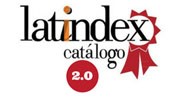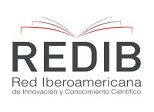Stress: a Constant Dance Between Biology and Culture
Keywords:
biology/culture; interdisciplinary; plasticity; stress; PTSD.Abstract
This article is a multidisciplinary literature review on the subject of stress, using many works of authors that are in the first line of research on the subject. The word stress, the concept and the theory of stress are very important issues today and their complexity transcend all the academic and cultural levels. The importance of better understanding the phenomenon called stress is that it is part of the daily life of all kinds of people of different cultures and often has dire consequences for the health of the individuals. Academically speaking, today more than ever, an interdisciplinary approach is needed, in which explanations of human behavior, biological structures and physiological mechanisms are complemented to identify and explain both, old and new forms of phenomena that affect human beings. Consequently, the objective of this article is to share with the students and professors of various disciplines of study, the topic of stress, its connections and implications with biology and culture and to unleash questions and answers to continue investigating this phenomenon more deeply. This article ends with research suggestions towards the reduction or elimination of stress in the daily lives of people today.
References
California Newsreel with Vital Pictures, Productor., (2008). Unnatural Causes…is
inequality making us sick? Presented by the National Minority Consortia of Public Television Outreach in association with Joint Center Health Policy Institute. Recuperado de: https://unnaturalcauses.org/
Dhabhar, F. S. (2009). Enhancing versus suppressive effects of stress on immune function:
implications for immunoprotection and immunopathology. Neuroimmunomodulation. 16 (5),300–317. Recuperado de: https://www.ncbi.nlm.nih.gov/pmc/articles/PMC2790771/
Epel, E.S., Blackburn, E.H., Lin J., Dhabhar, F.S., Adler, N.E., Morrow, J.D., y Cawthon, R.M.
(2004). Accelerated telomere shortening in response to life stress. Proc Natl Acad Sci U S A. 101(49),17312-5. Recuperado de: https://www.ncbi.nlm.nih.gov/pubmed/15574496
Goosens, K.A., y Sapolsky, R.M. (2007). Stress and Glucocorticoid Contributions to Normal
and Pathological Aging. En D.R. Riddle. (Ed), Brain Aging: Models, Methods, and Mechanism. Chapter 13. Recuperado de https://www.ncbi.nlm.nih.gov/books/NBK3870/
Griffiths, R., Johnson, M., Carducci, M., Umbricht, A., Richards, W., Richards, B., Cosimano
M., y Klinedinst, M. (2016). Psilocybin produces substantial and sustained decreases in depression and anxiety in patients with life-threatening cancer: A randomized double-blind trial. Journal of Psychopharmacology. 30(12) 1181–1197. Recuperado de: http://journals.sagepub.com/doi/pdf/10.1177/0269881116675513
Helman, C. (2007). Cultural aspects of stress and suffering. En Culture Health and Illness
-303. Fifth Edition. Hodder Arnold. London.
Herrera, M. (2008). Milk insufficiency in Esmeraldas, Ecuador: a multidisciplinary approach.
ProQuest UMI Dissertation Publishing.
Herrera, M. (2011). Diez Años Haciendo Investigación en la Ciudad de Esmeraldas, Ecuador:
Experiencia Adquirida. Anuario de Investigación y Desarrollo, 2010-201. Universidad Católica de Esmeraldas, Ecuador: 85-91.
Kirmayer, L., Lemelson, R., y Barad, M., (2007). Understanding Trauma: Integrating
Biological, Clinical, and Cultural Perspectives. 519pp. Cambridge University Press. USA.
Li, Shu-Chen (2003). Biocultural orchestration of developmental plasticity across levels: The
interplay of biology and culture is shaping the mind and behavior across the life span. Psychological Bulletin. 129 (2)171-936.
Lieberman, E., (2013). The Story of the Human Body: Evolution, Health, and Disease. Pantheon Books. 460 pp. New York. USA.
Low, S., (1985). Culturally interpreted symptoms of Culture Bound Syndromes: A cross
Cultural review of nerves. Soc. Sci. Med. 21(2). 187-196.
Martin, J., Hamilton, B., Sutton, P., Ventura, S., Menacker, F., y Munson, M., (2002).
Births: Final Data for 2000. National Vital Statistics Reports. 52, no.10 Hyattsville, Md. National Center for Health Statistics. CDC.
McElroy, A., y Townsend P., (2009). Medical Anthropology in Ecological Perspective. Fifth Edition. 500 pp. Westview Press. USA.
McEwen, B., (2007). Physiology and neurobiology of stress and adaptation: central role of the
brain. Physiol Rev. 87(3):873-90.
McEwen, B., y Lasley E., (2002). The End of Stress As We Know It. Washington, DC: John
Henry Press. 239 pp. USA.
Mullings, L., y Wali, A., (2001). Stress and Resilience: The Social Context of Reproduction in
Central Harlem. New York: Kluwer Academic/Plenum Publishers. 210 pp. USA.
National Center for Post-Traumatic Stress Disorder (2017). Understanding PTSD and PTSD
Treatment. Recuperado de: https://www.ptsd.va.gov/PTSD/public/understanding_ptsd/booklet.pdf
Rice, V., (2000). Theories of Stress and Relationship to Health. Handbook of Stress, Coping,
and Health: Implications for Nursing Research, Theory, and Practice. Sage Publications Inc. 247 pp. USA.
Rodriguez-Ortiz C., y Bermudez-Rattoni F., (2007). Memory Reconsolidation or Updating
Consolidation? En: Bermudez-Rattoni (edi) Neural Plasticity and Memory: From Genes to Brain Imaging. Frontiers in Neuroscience. Chapter 11. Universidad Nacional Autónoma de México. Boca Ratón. USA.
Rosenberger, P., Ickovics, J., Epel, E., Nadler, E., Jokl P., Fulkerson J., Tillie J., y Dhabhar F.,
(2009). Surgical stress-induced immune cell redistribution profiles predict short-term and long-term postsurgical recovery. A prospective study. J Bone Joint Surg Am. 91(12). 2783-94.
Sapolsky, R. (1998). Why Zebras Don’t Get Ulcers: An Updated Guide to Stress, Stress-
Related Diseases, and Coping. Freeman, New York. 434 pp. USA.
Sapolsky, R., (2010, Julio, 28). Under Pressure. Wired Magazine, 18:08. California.
Sarchet, P., (2011, Nov, 12). The Nocebo Effect: Wellcome Trust science writing prize. The
Guardian. Recuperado de: http://www.guardian.co.uk/science/2011/nov/13/nocebo-pain-wellcome-trust-prize
Sternberg, E., (2001). The Balance Within: The Science Connecting Health and Emotions.
W.H. Freeman and Company. New York. 250 pp. USA.
Taber’s Cyclopedic Medical Dictionary (1981). Davis Company, Philadelphia. 1818 PP. USA.
Wilken, R., (2002). The Unified Stress Concept. TrustMark. 19 pp. USA.
Downloads
Published
How to Cite
Issue
Section
License
Los artículos enviados a la Revista Científica Hallazgos21 deberán ser totalmente originales e inéditos.
Los autores son los responsables de los textos y las imágenes incluidas en los artículos y no necesariamente reflejan el pensamiento de la editorial o de la Pontificia Universidad Católica del Ecuador, Sede Esmeraldas (PUCESE).
Los autores disponen cederle a la Revista Científica Hallazgos21 todos los derechos inherentes para la edición, publicación y distribución o divulgación del mismo.
Se autoriza a las revistas firmantes de los acuerdos de Encuentros de Revistas Latinoamericanas para reproducir en parte o totalmente los artículos con la sola mención de la fuente claramente señalada.







